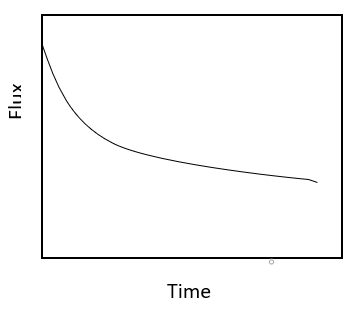This set of Bioseparation Engineering Multiple Choice Questions & Answers (MCQs) focuses on “Membrane Separation – Set 3”.
1. A flat sheet membrane looks like __________
a) filter paper
b) muslin cloth
c) fiber
d) stick
View Answer
Explanation: A filter paper appearance is given to the flat sheet membrane so that it can be as flat as a paper and the separation is easy for the fine particles.
2. What are the other forms of flat sheet membrane?
a) Sphere
b) Box
c) Circular
d) Disc
View Answer
Explanation: The other forms for the flat sheet membrane is rectangular sheets along with the filter discs.
3. The common type of tubular membrane looks like ___________
a) sheet
b) hollow tube
c) fixed tube
d) disc
View Answer
Explanation: The tubular membrane is mostly available in the form of tubes that are hollow therefore, the hollow tubes are the ones which is similar to the tubular membrane.
4. The throughput of any material across the membrane is known as ___________
a) Fouling
b) Driving force
c) Pressure drop
d) Flux
View Answer
Explanation: A flux across a membrane for the material based on its throughput is known as flux and is the quantity of permeate made per unit area of membrane surface per unit time.
5. The flux of a membrane depends on the ___________
a) driving forces
b) applied driving forces
c) characteristics of membrane
d) properties of membrane
View Answer
Explanation: The applied driving forces such as concentration gradient, trans-membrane pressure and resistance offered through the membrane is carried out for the flux of a membrane.
6. The decline in the flux across the membrane is caused because of ___________
a) fouling
b) flux
c) pressure
d) concentration gradient
View Answer
Explanation: Fouling causes the decline in the flux of the membrane and the flux declines with respect to time with a constant driving force for membrane process.
7. The process of fouling refers to ____________
a) decrease in membrane resistance
b) constant membrane resistance
c) increase in membrane resistance
d) constant flux
View Answer
Explanation: The resistance caused by the membrane increases during the process of separation through the membrane and this refers to the process of fouling in the membrane.
8. Some membranes during the process of membrane separation operates at ___________
a) constant flux
b) increased flux
c) decreased flux
d) decreased fouling
View Answer
Explanation: The membranes used in the process of separation are operated at a flux that are constant and with the constant flux, the processes performed by the membrane are controlled by the fouling process which manifests itself with respect to the increased pressure.
9. What is the significance of the given diagram?

a) Increase in flux
b) Decrease in flux
c) Increase in fouling
d) Decrease in fouling
View Answer
Explanation: The flux declines due to the process of fouling, at a constant driving forces i.e. the pressure across the membrane in the membrane separation of the bioprocess separation engineering.
10. Fouling is considered an undesirable phenomenon that are caused by ___________
a) bubbling
b) filtration
c) pretreatment
d) adsorption
View Answer
Explanation: The undesirable process such as fouling is the result of deposition of the material over the membrane and the adsorption in the membrane used for the separation process in membrane separation.
Sanfoundry Global Education & Learning Series – Bioseparation Engineering.
To practice all areas of Bioseparation Engineering, here is complete set of 1000+ Multiple Choice Questions and Answers.
If you find a mistake in question / option / answer, kindly take a screenshot and email to [email protected]
